Evaluation of the Size-of-Source Effect in Thermal Imaging Cameras
Abstract
:1. Introduction
2. Radiation Thermometers and the Size-of-Source Effect
3. Material and Methods
3.1. Thermal Imaging Camera
3.2. Sources of Heat Radiation—Blackbodies
3.3. Radiation Blocking Tiles
3.4. SSE Evaluation Protocol
3.5. Thermogram Analysis
3.6. Data Processing
4. Results
4.1. Single Slot Tiles
4.2. Multiple Slot Tiles
4.3. Thermogram Analysis of Tiles with Different Apertures Shape
4.4. Thermogram Analysis of Complex Tiles
4.5. Thermogram Analysis of Regions in the Vicinity of the Aperture Edge
5. Discussion
6. Conclusions
Author Contributions
Funding
Institutional Review Board Statement
Informed Consent Statement
Data Availability Statement
Conflicts of Interest
References
- Su, T.C. Assessment of cracking widths in a concrete wall based on tir radiances of cracking. Sensors 2020, 20, 4980. [Google Scholar] [CrossRef] [PubMed]
- Quattrocchi, A.; Freni, F.; Montanini, R. Self-heat generation of embedded piezoceramic patches used for fabrication of smart materials. Sens. Actuators A Phys. 2018, 280, 513–520. [Google Scholar] [CrossRef]
- Korukçu, M.Ö.; Kilic, M. The usage of IR thermography for the temperature measurements inside an automobile cabin. Int. Commun. Heat Mass Transf. 2009, 36, 872–877. [Google Scholar] [CrossRef]
- Perić, D.; Livada, B.; Perić, M.; Vujić, S. Thermal imager range: Predictions, expectations, and reality. Sensors 2019, 19, 3313. [Google Scholar] [CrossRef] [PubMed] [Green Version]
- Machin, G.; Sergienko, R. A Comparative Study of Size of Source Effect Determination Techniques. In Proceedings of the 2001 8th International Symposium on Temperature and Thermal Measurements in Industry and Science (Tempmeko), Berlin, Germany, 19–21 June 2001. [Google Scholar]
- Solorio-Leyva, J.C.; Suarez-Romero, J.G.; Hurtado-Ramos, J.B.; Rodriguez, E.T.; Cortes-Reynoso, J.-G.R. The size-of-source effect in practical measurements of radiance. Proc. SPIE Int. Soc. Opt. Eng. 2004, 5622, 1243–1248. [Google Scholar]
- Pušnik, I.; Grgić, G.; Drnovšek, J. System for the determination of the size-of-source effect of radiation thermometers with the direct reading of temperature. Meas. Sci. Technol. 2006, 17, 1330–1336. [Google Scholar] [CrossRef]
- Pušnik, I.; Grgić, G.; Drnovšek, J. Calculated uncertainty of temperature due to the size-of-source effect in commercial radiation thermometers. Int. J. Thermophys. 2008, 29, 322–329. [Google Scholar] [CrossRef]
- Yoon, H.W.; Allen, D.W.; Saunders, R.D. Methods to reduce the size-of-source effect in radiometers. Metrologia 2005, 42, 89–96. [Google Scholar] [CrossRef]
- Saunders, P. Correcting radiation thermometry measurements for the size-of-source effect. Int. J. Thermophys. 2011, 32, 1633–1654. [Google Scholar] [CrossRef]
- Lane, B.; Whitenton, E.; Madhavan, V.; Donmez, A. Uncertainty of temperature measurements by infrared thermography for metal cutting applications. Metrologia 2013, 50, 637–653. [Google Scholar] [CrossRef] [Green Version]
- Ivanov, G.V.; Ivanov, V.G. Temperature and emissivity determination of small-size long-range object’s using staring Thermovision Cameras. Infrared Phys. Technol. 2013, 60, 161–165. [Google Scholar] [CrossRef] [Green Version]
- Whittam, A.; Simpson, R.; Mcevoy, H. Performance tests of thermal imaging systems to assess their suitability for quantitative temperature measurements. In Proceedings of the 2014 12th International Conference on Quantitative InfraRed Thermography (QIRT), Bordeaux, France, 7–11 July 2014. [Google Scholar]
- Hobbs, M.J.; Zhu, C.; Grainger, M.P.; Tan, C.H.; Willmott, J.R. Quantitative traceable temperature measurement using novel thermal imaging camera. Opt. Express 2018, 26, 24904. [Google Scholar] [CrossRef] [PubMed]
- Schramm, S.; Schmoll, R.; Kroll, A. Compensation of the size-of-source effect of infrared cameras using image processing methods. In Proceedings of the 2019 13th International Conference on Sensing Technology (ICST), Sydney, Australia, 2–4 December 2019. [Google Scholar]
- Machin, G.; Ibrahim, M. Size of source effect and temperature uncertainty: II. Low temperature systems. In Proceedings of the 1999 7th International Symposium on Temperature and Thermal Measurements in Industry and Science (Tempmeko), Delft, The Netherlands, 1–3 June 1999. [Google Scholar]
- Liebmann, F. Steps to determine if the size of your source is too small. FLIR Systems 2012. Available online: https://us.flukecal.com/blog/steps-determine-if-size-your-source-too-small (accessed on 30 December 2020).
- Ward, B. IFOV, Spatial Resolution, Spot Measurement Size, Distance to Spot Ratios... What do They all Mean? 2017. Available online: https://www.linkedin.com/pulse/ifov-spatial-resolution-spot-measurement-size-distance-brenton-ward/ (accessed on 13 September 2020).
- Baker, A. How far can I measure with a thermal imaging camera? FLIR Systems. Available online: https://www.controlengeurope.com/article/163635/How-far-can-I-measure-with-a-thermal-imaging-camera-.aspx (accessed on 15 October 2020).
- FLIR. User’s Manual FLIR T6xx Series; FLIR Systems, Inc.: Wilsonville, OR, Canada, 2016. [Google Scholar]
- Miklavec, A.; Pušnik, I.; Batagelj, V.; Drnovšek, J. A large aperture blackbody bath for calibration of thermal imagers. Meas. Sci. Technol. 2013, 24, 025001. [Google Scholar] [CrossRef]
- FLIR. Understanding Distance:Size Ratio. Available online: https://www.flir.com/discover/professional-tools/understanding-distancesize-ratio/ (accessed on 13 September 2020).
- FLIR. Infrared Camera Accuracy and Uncertainty in Plain Language. Available online: https://www.flir.com/discover/rd-science/infrared-camera-accuracy-and-uncertainty-in-plain-language/ (accessed on 13 September 2020).
- IEC. IEC 80601-2-59: Medical Electrical Equipment–Part. 2–59: Particular Requirements for Basic Safety and Essential Performance of Screening Thermoghraphs for Human Febrile Temperature Screening; IEC: Geneva, Switzerland, 2017. [Google Scholar]
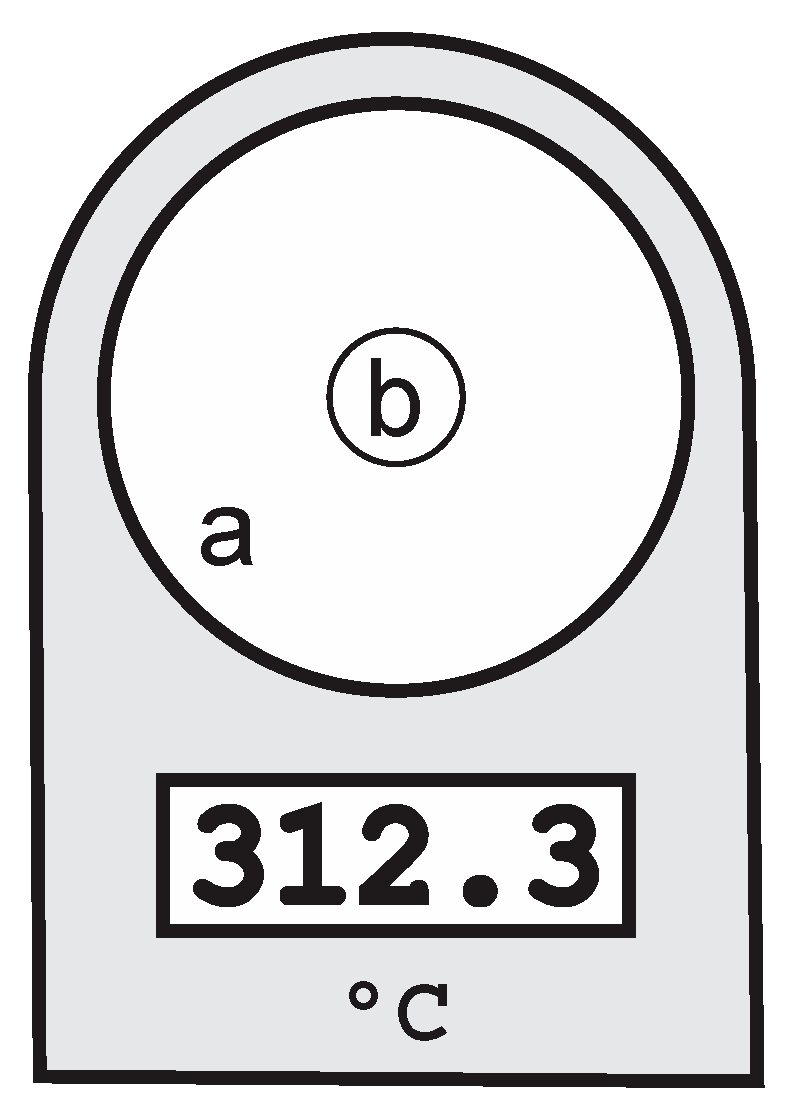

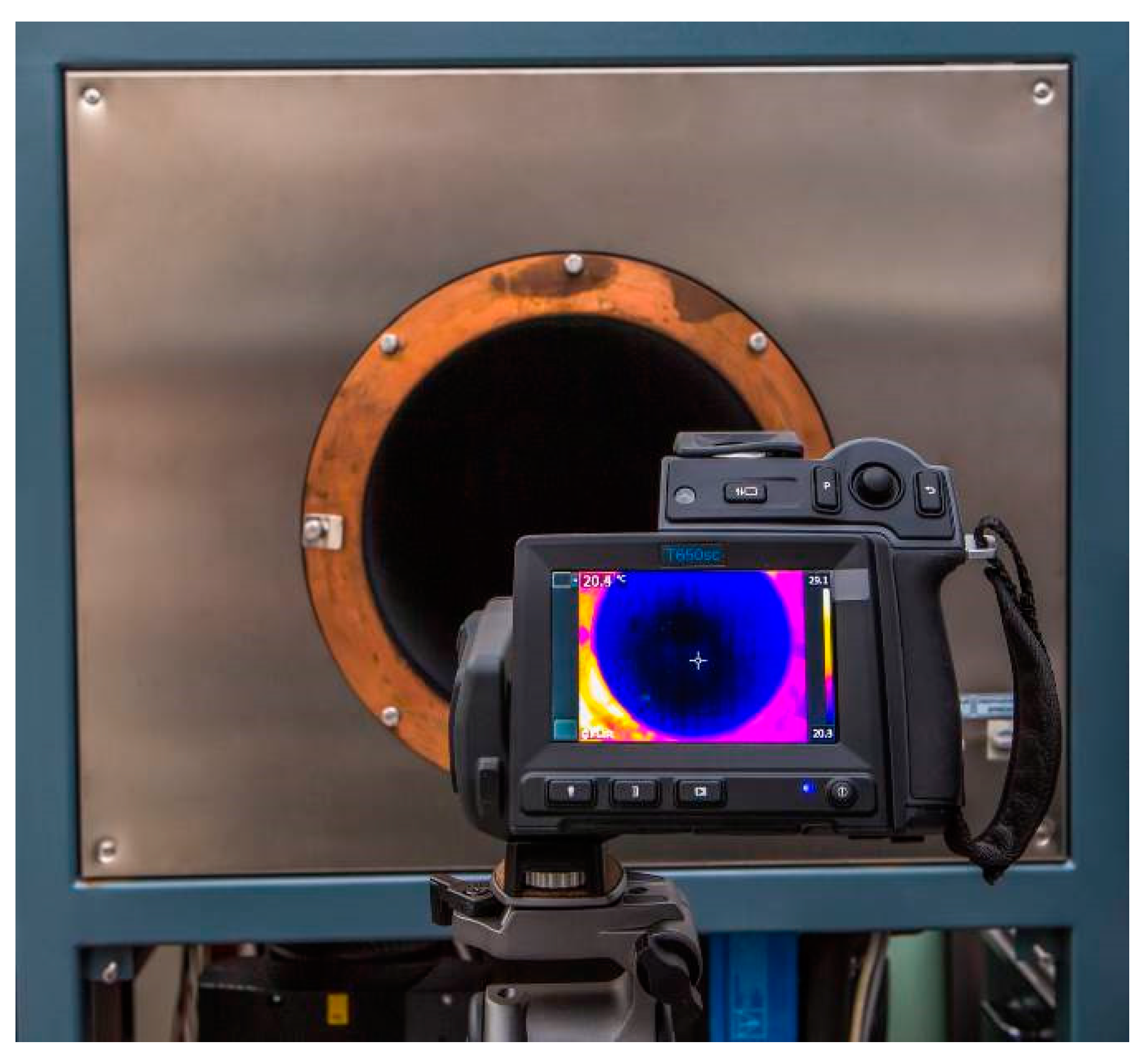


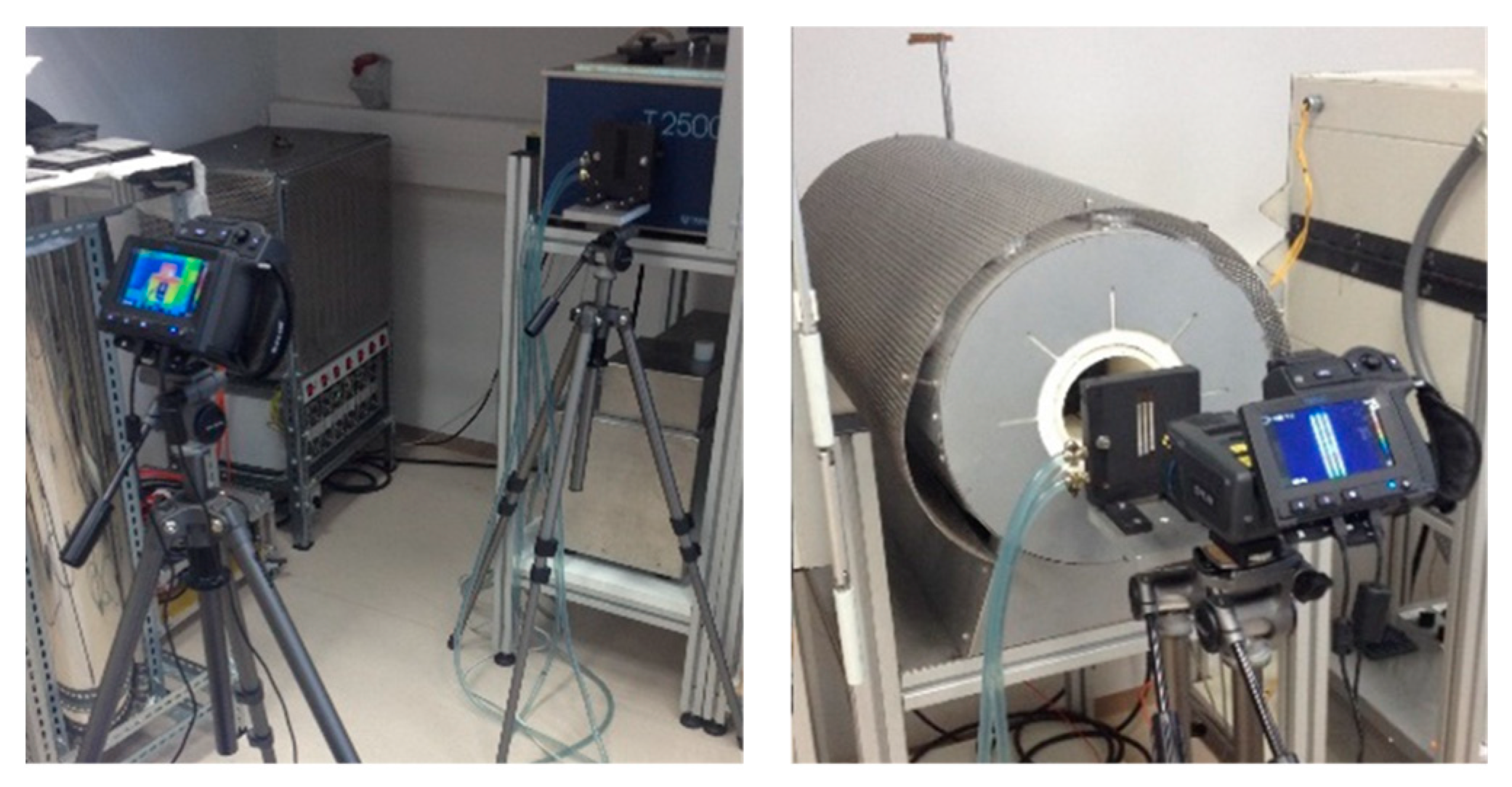



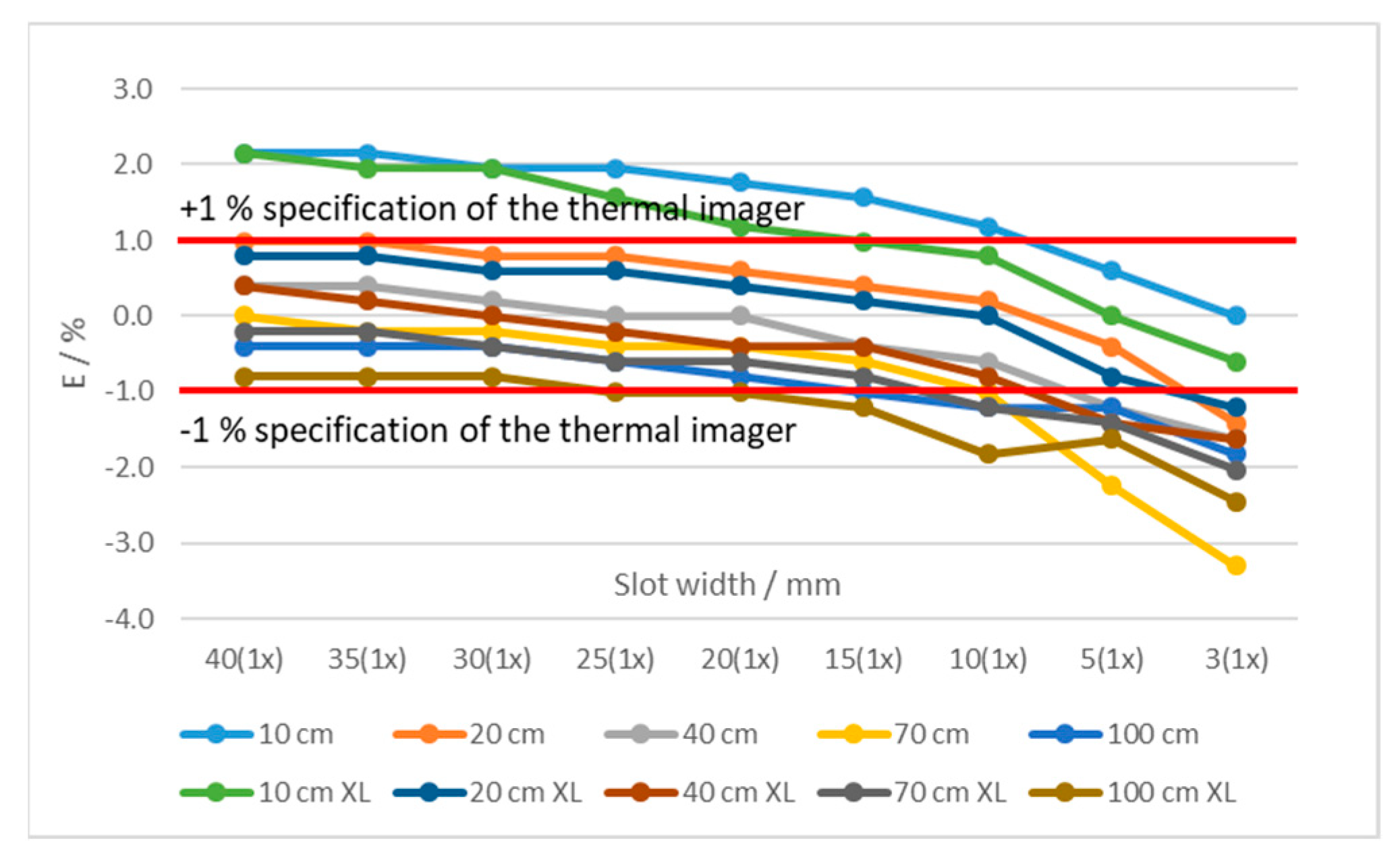


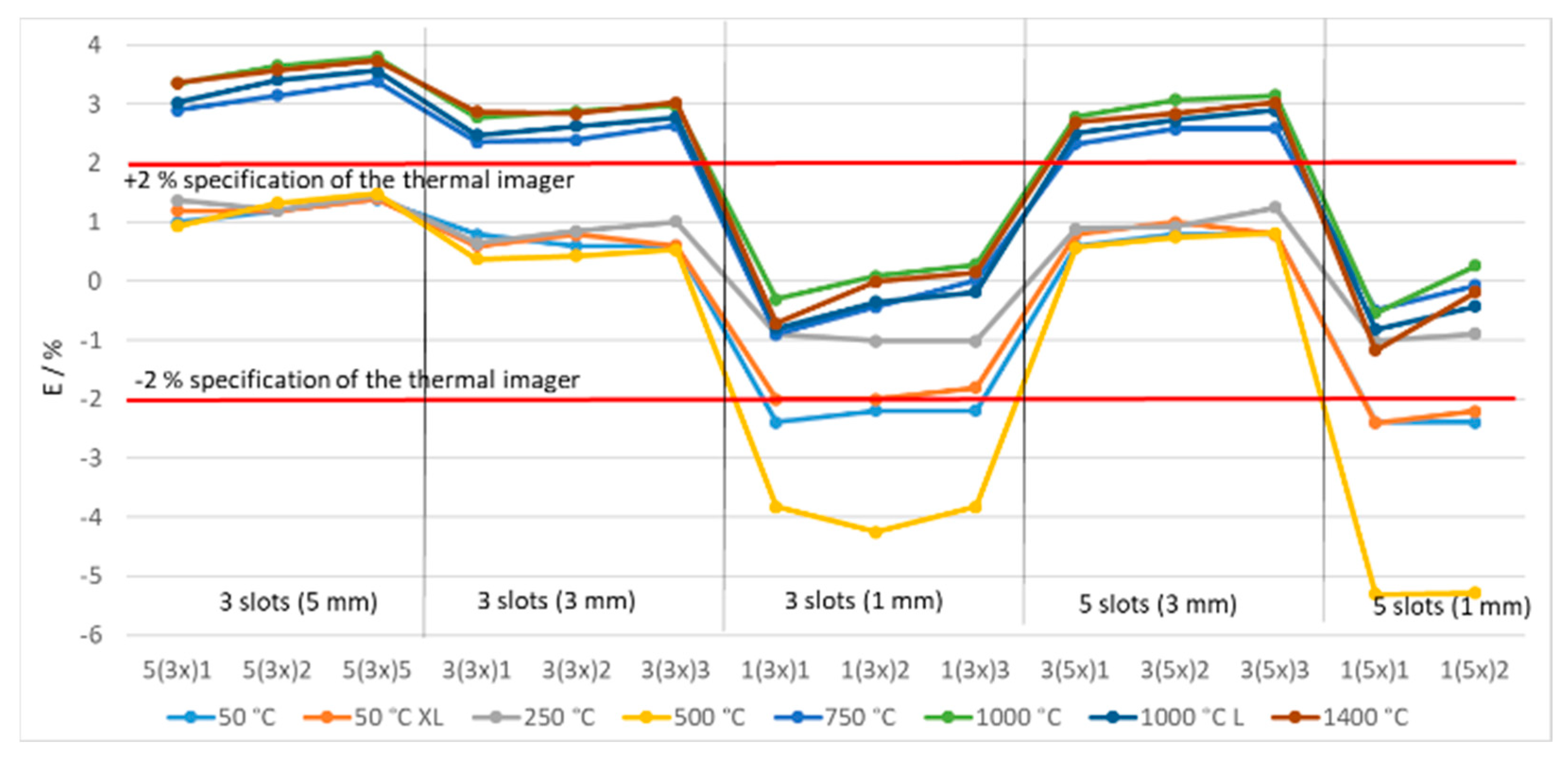
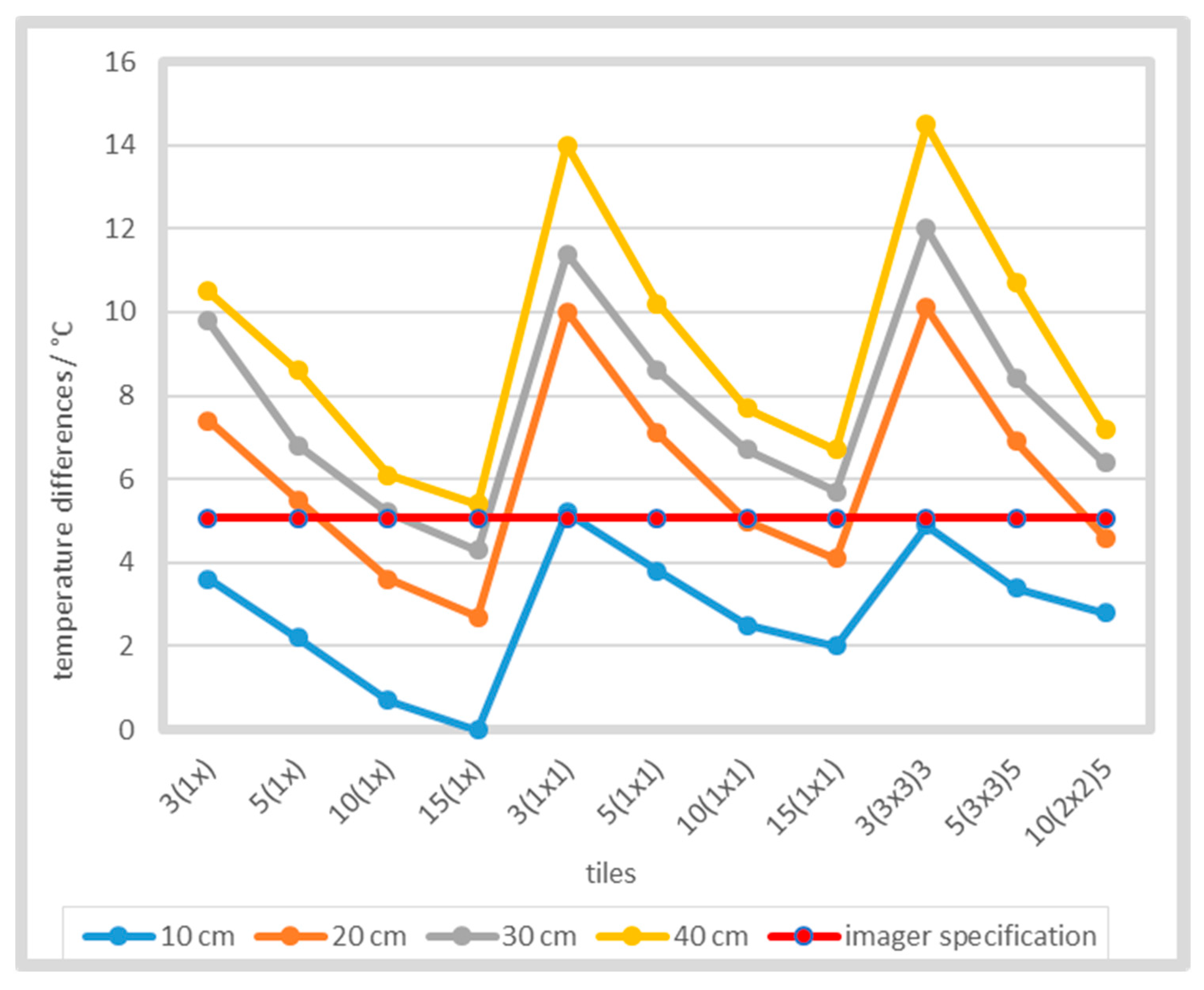
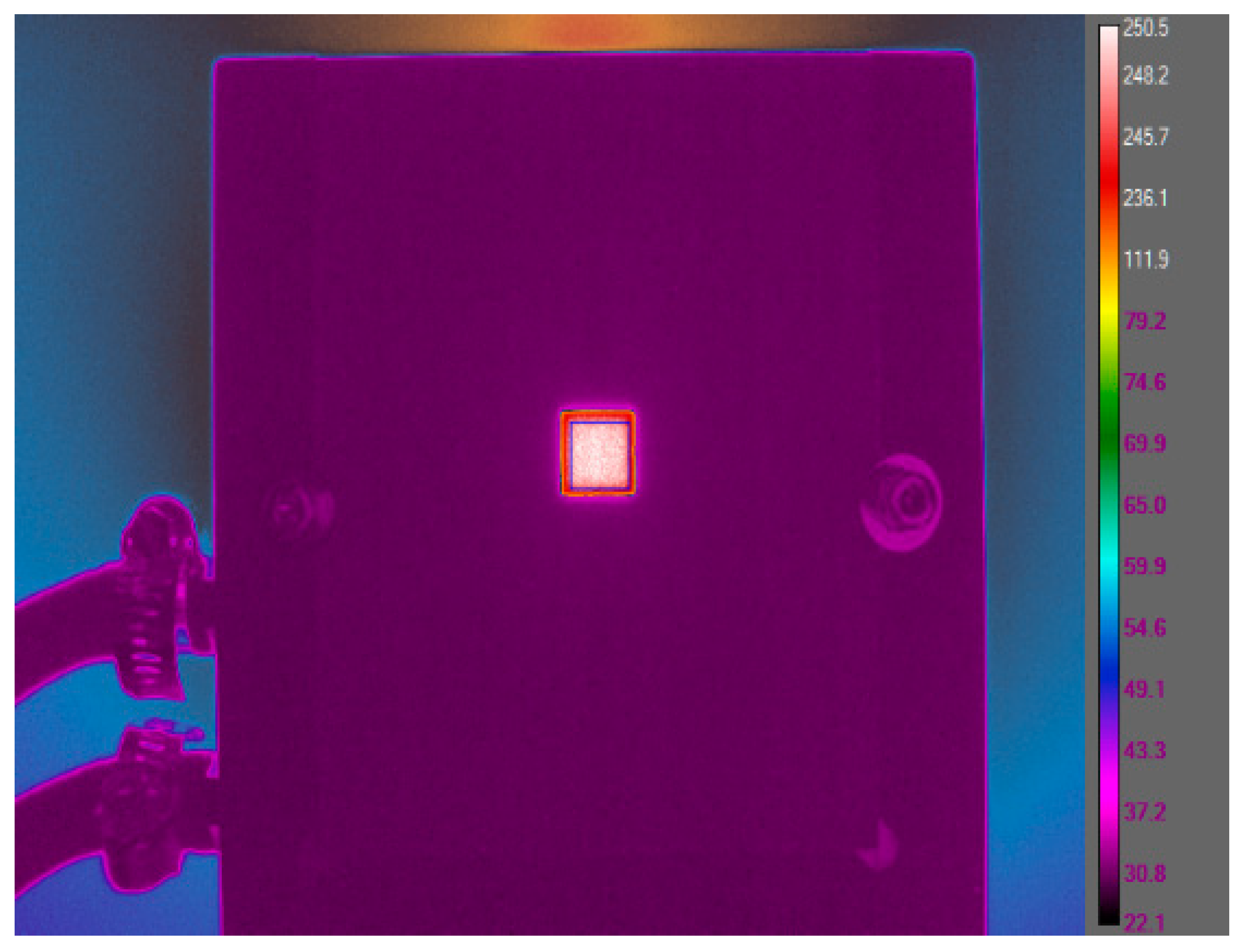
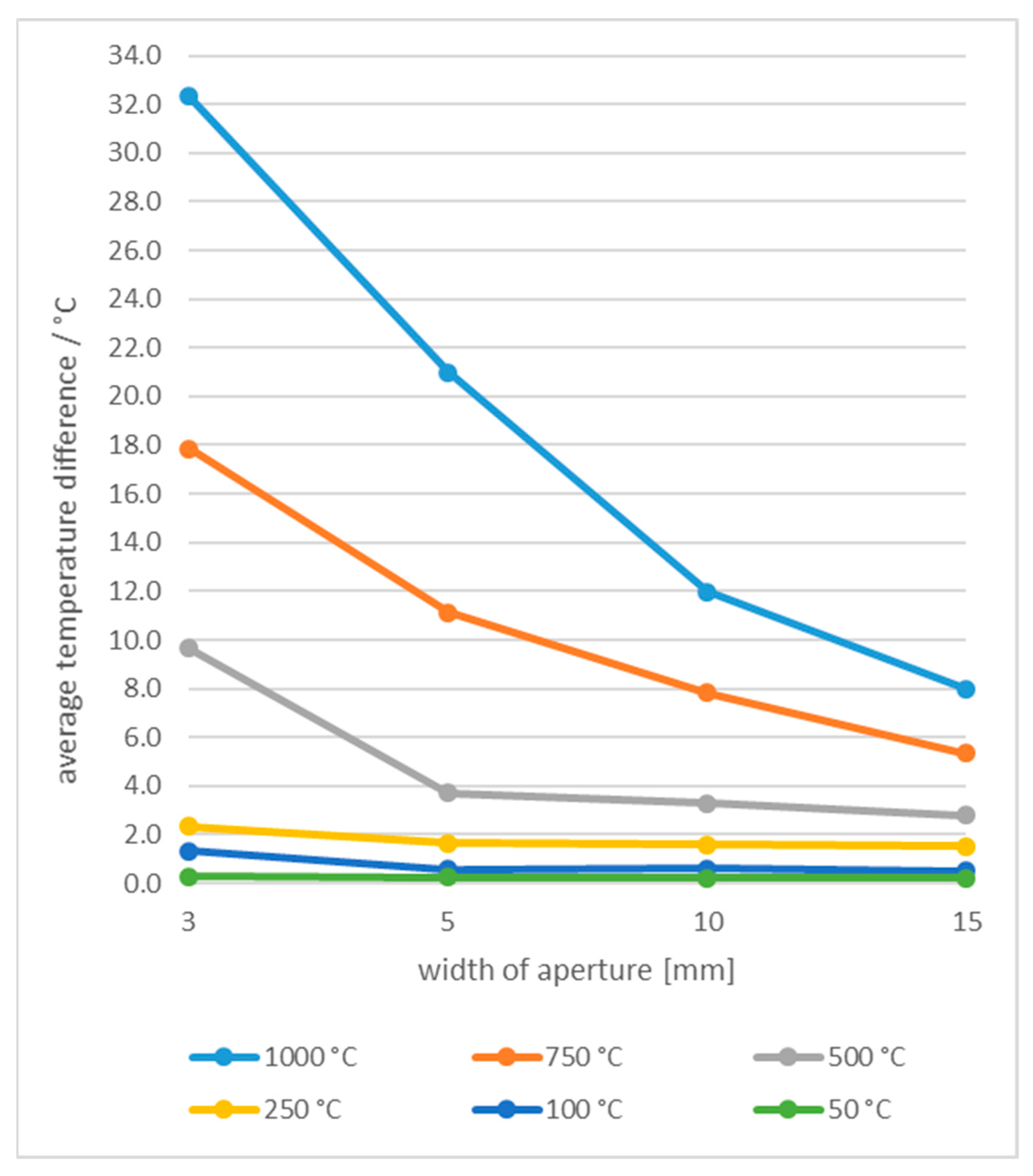
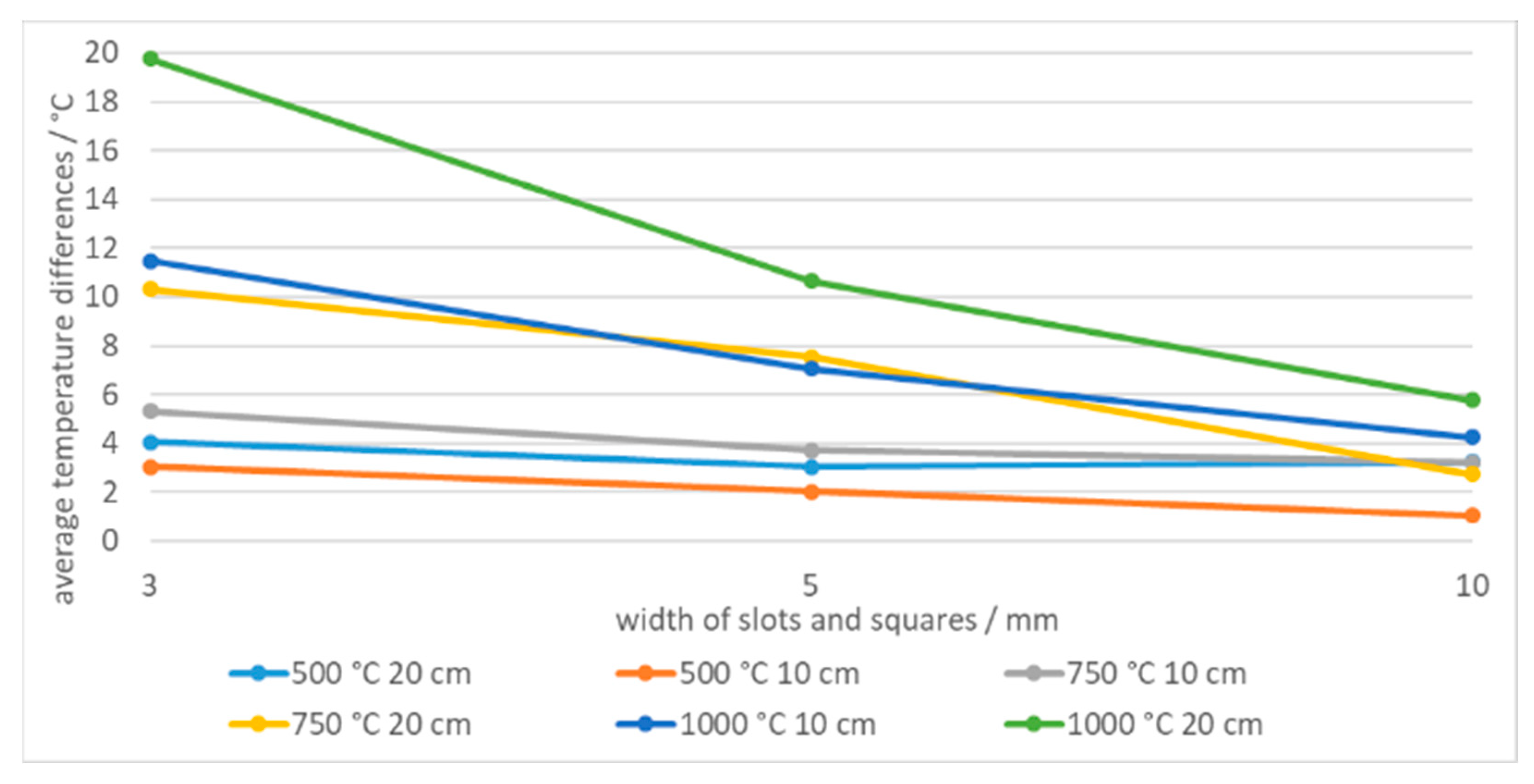

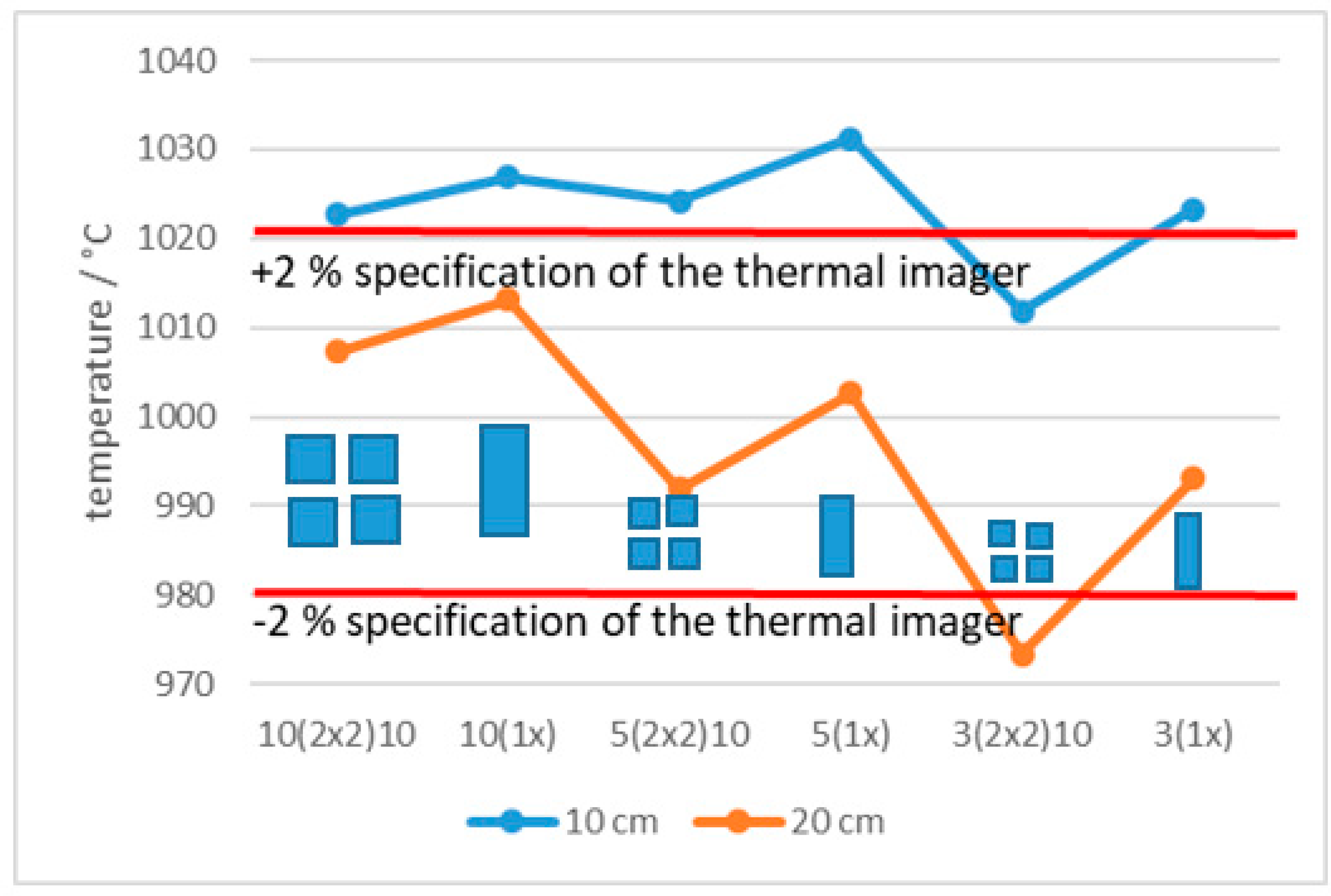


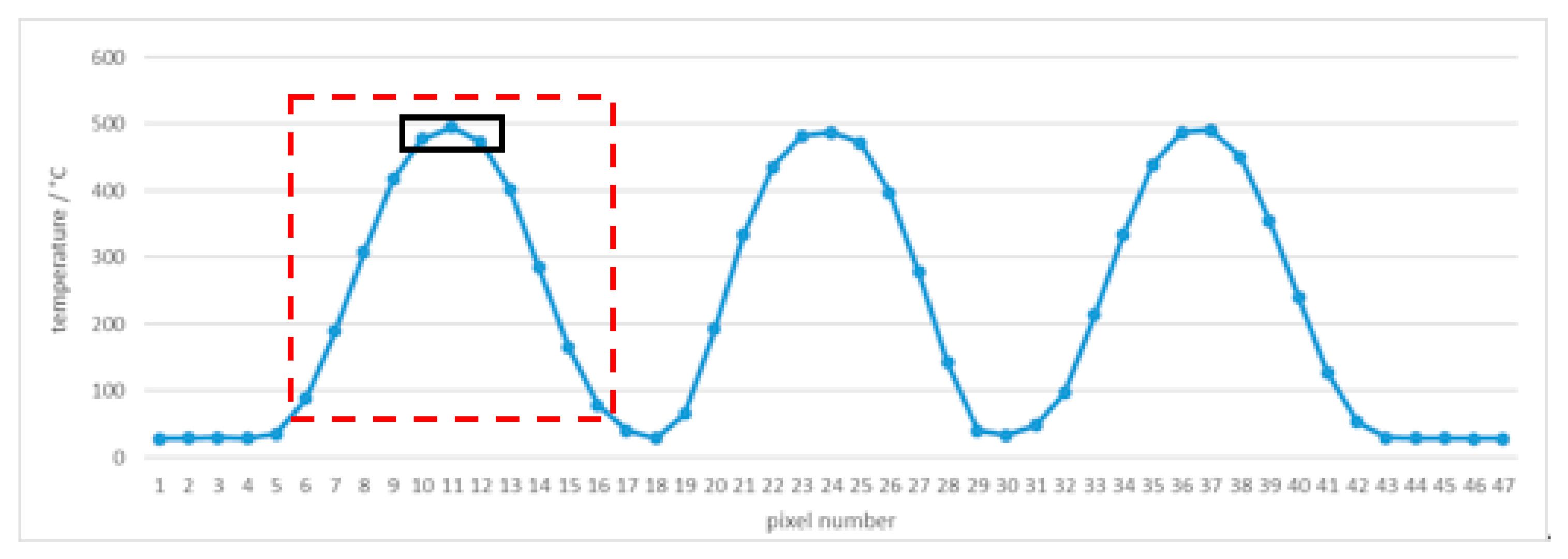

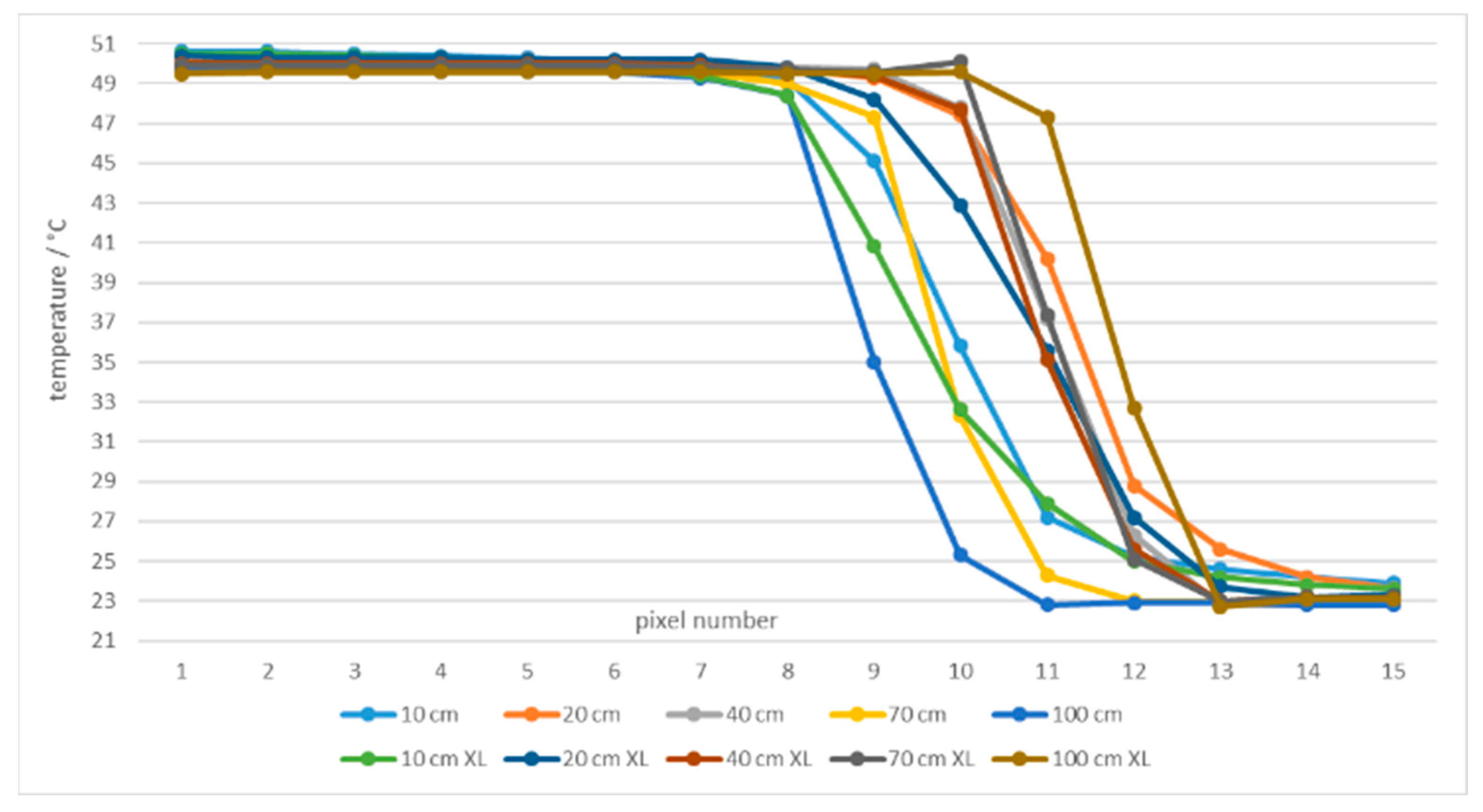
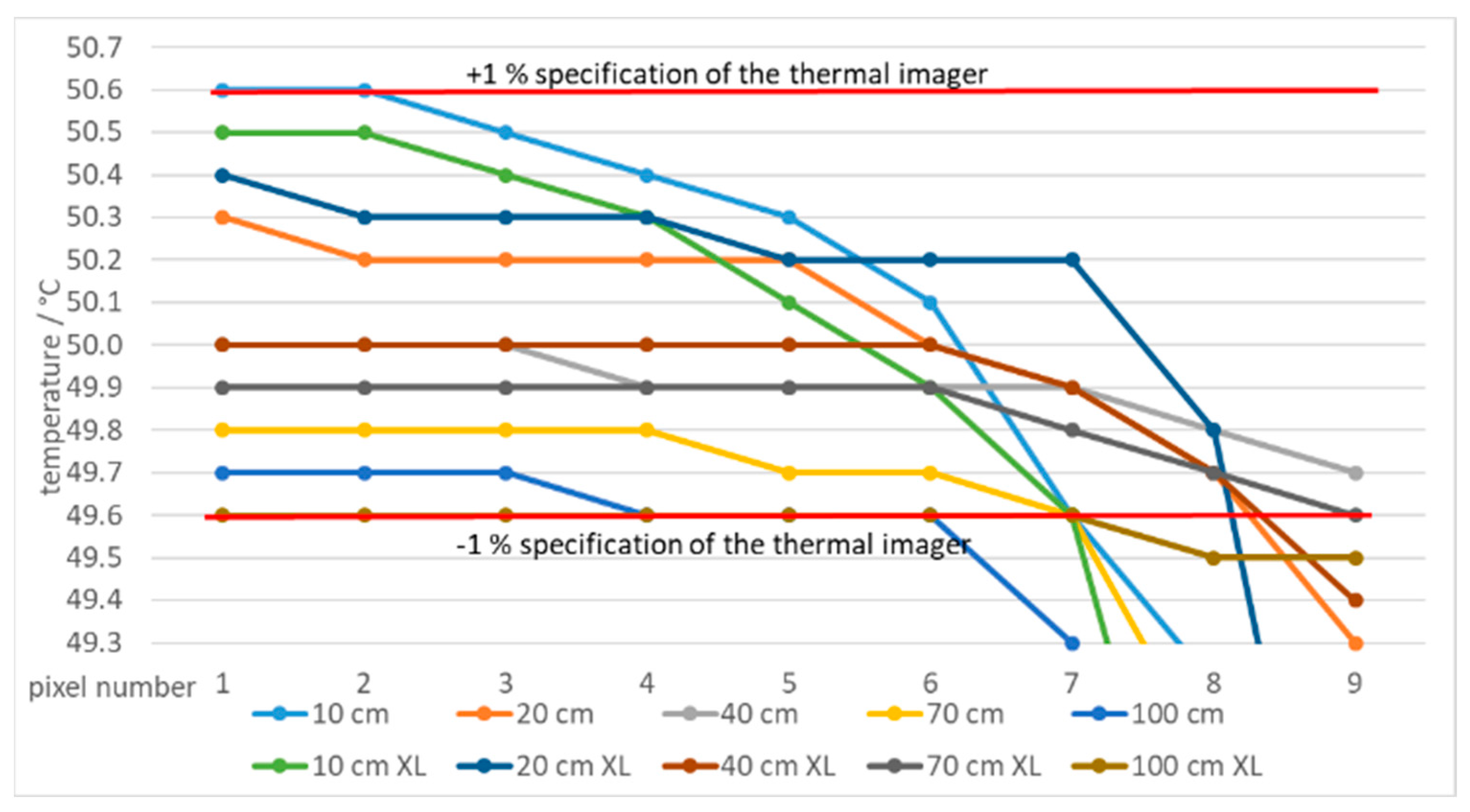
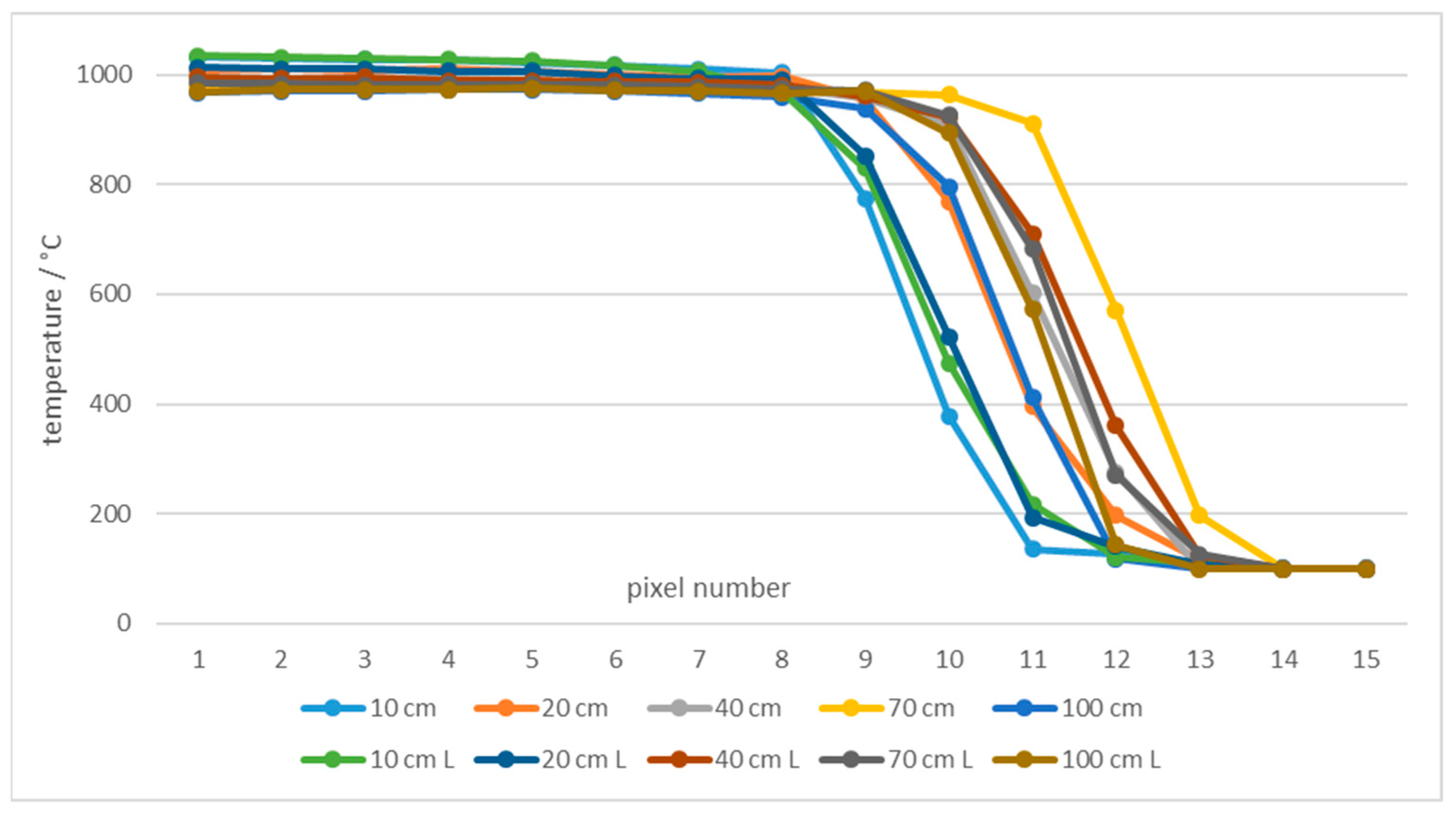
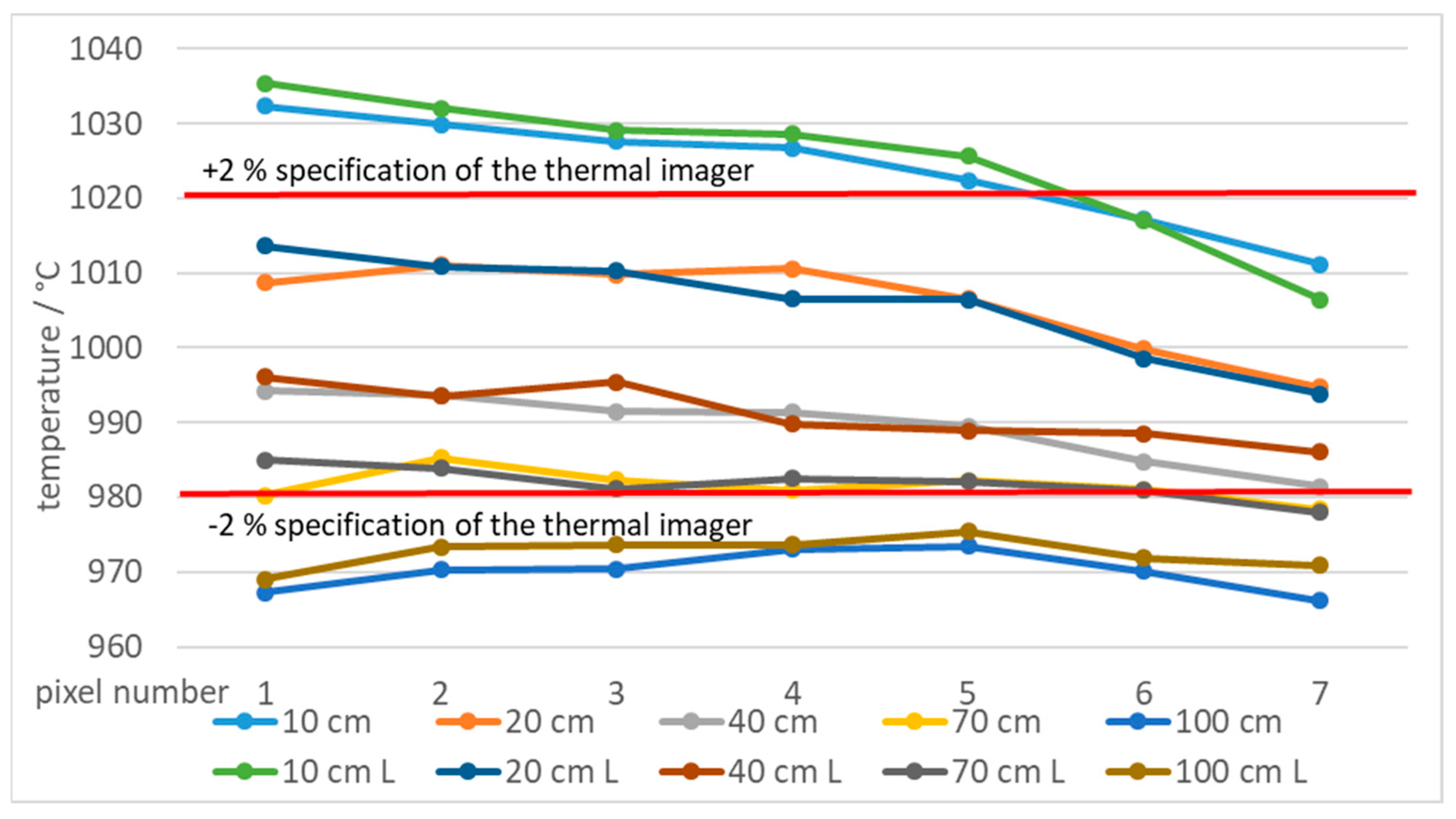
| Blackbody | Aperture Diameter × Cavity Length (mm) | Thermal Media, Principle | Range (°C) |
|---|---|---|---|
| Land P1600B (L) (by Land Infrared) | 50 × 320 | SiC furnace | 600 to 1500 |
| Na heat-pipe (by ACT) | 40 × 500 | heat pipe | 600 to 1000 |
| Cs heat-pipe (by IKE Stuttgart) | 55 × 500 | heat pipe | 250 to 600 |
| T 2500 (by Tamson) | 60 × 400 | silicon oil | 150 to 250 |
| T 2500 (by Tamson) | 60 × 400 | silicon oil | 60 to 150 |
| T 2500 (by Tamson) | 60 × 400 | water | 5 to 60 |
| OB XL Piro (by Kambič) | 263 × 1000 | water | 10 to 70 |
| Single | 40(1×), 35(1×), 30(1×), 25(1×), 20(1×), 15(1×), | ||||
| slot | 10(1×), 5(1×), 3(1×) | ||||
| Multiple | 5(3×)5, 5(3×)2, 5(3×)1, 3(3×)3, 3(3×)2, 3(3×)1, | ||||
| slots | 1(3×)3, 1(3×)2, 1(3×)1, 3(5×)3, 3(5×)2, 3(5×)1, | ||||
| 1(5×)2, 1(5×)1, 1(10×)2, 1(10×)1 | |||||
| Square | 10(2 × 2)10, 10(2 × 2)5, 5(2 × 2)10, | 3(2 × 2)10, | |||
| apertures | 5(3 × 3)5, | 3(3 × 3)5, | 3(3 × 3)3, | 15(1 × 1), | 10(1 × 1), |
| 5(1 × 1), 3(1 × 1) | |||||
| Number of Pixels in ROI | Camera-Tile Distance (cm) | |||
|---|---|---|---|---|
| Tile | 10 | 20 | 30 | 40 |
| 3(1×); 3(1 × 1); 3(3 × 3)3 | 225 | 64 | 36 | 16 |
| 5(1×); 5(1 × 1); 5(3 × 3)5 | 784 | 225 | 121 | 64 |
| 10(1×); 10(1 × 1); 10(2 × 2)5 | 4225 | 1156 | 529 | 289 |
| 15(1×); 15(1 × 1) | 10,404 | 2704 | 1296 | 729 |
| Distance/cm | Average/°C/No. of Pixels | Standard Deviation/°C | Error/°C |
|---|---|---|---|
| 15 | 498.6/8 425.4/22 | 0.6 120.7 | −1.0 −74.2 |
| 40 | 495.3/3 | 11.4 | −4.3 |
| 100 | 473.6/1 | 73.3 * | −26.0 |
Publisher’s Note: MDPI stays neutral with regard to jurisdictional claims in published maps and institutional affiliations. |
© 2021 by the authors. Licensee MDPI, Basel, Switzerland. This article is an open access article distributed under the terms and conditions of the Creative Commons Attribution (CC BY) license (http://creativecommons.org/licenses/by/4.0/).
Share and Cite
Pušnik, I.; Geršak, G. Evaluation of the Size-of-Source Effect in Thermal Imaging Cameras. Sensors 2021, 21, 607. https://doi.org/10.3390/s21020607
Pušnik I, Geršak G. Evaluation of the Size-of-Source Effect in Thermal Imaging Cameras. Sensors. 2021; 21(2):607. https://doi.org/10.3390/s21020607
Chicago/Turabian StylePušnik, Igor, and Gregor Geršak. 2021. "Evaluation of the Size-of-Source Effect in Thermal Imaging Cameras" Sensors 21, no. 2: 607. https://doi.org/10.3390/s21020607





